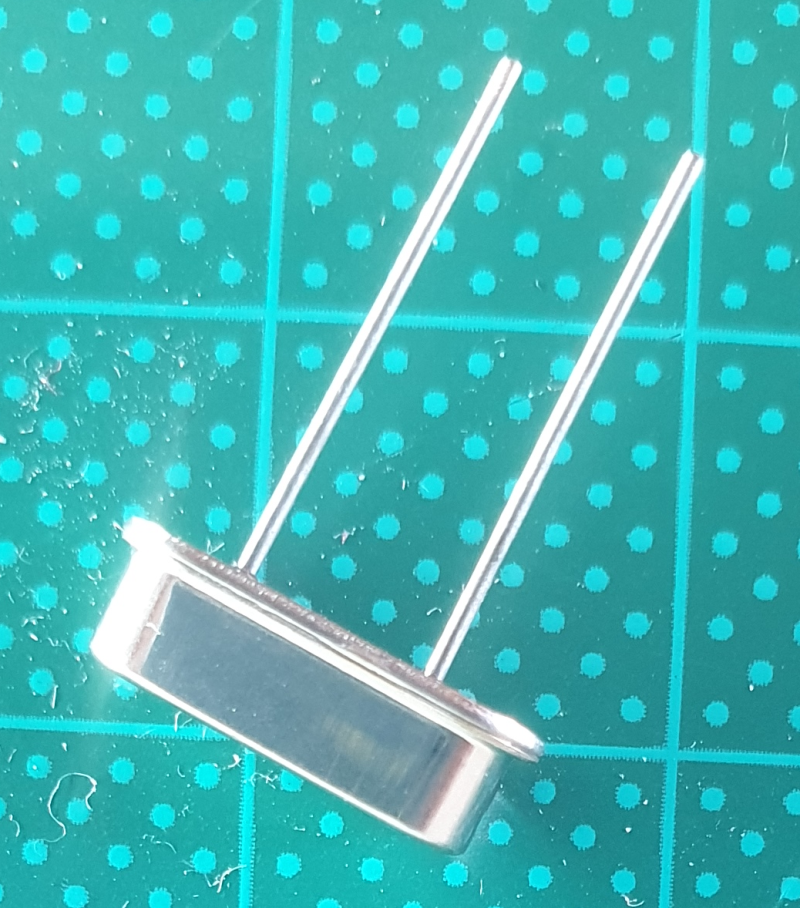|
|
Passive components, Crystal Oscillators HC-49S

A crystal oscillator is an electronic oscillator that makes use of crystal as a frequency selective element to obtain an inverse piezoelectric effect. This frequency is often used to keep track of time, as in quartz wristwatches, to provide a stable clock signal for digital integrated circuits, and to stabilize frequencies for radio transmitters and receivers. The most common type of piezoelectric resonator used is a quartz crystal, so oscillator circuits incorporating them became known as crystal oscillators. However, other piezoelectric materials including polycrystalline ceramics are used in similar circuits.
A crystal oscillator relies on the slight change in shape of a quartz crystal under an electric field, a property known as electrostriction or inverse piezoelectricity. A voltage applied to the electrodes on the crystal causes it to change shape; when the voltage is removed, the crystal generates a small voltage as it elastically returns to its original shape. The quartz oscillates at a stable resonant frequency, behaving like an RLC circuit, but with a much higher Q factor (less energy loss on each cycle of oscillation). Once a quartz crystal is adjusted to a particular frequency (which is affected by the mass of electrodes attached to the crystal, the orientation of the crystal, temperature and other factors), it maintains that frequency with high stability.
Quartz crystals are manufactured for frequencies from a few tens of kilohertz to hundreds of megahertz. As of 2003, around two billion crystals are manufactured annually. Most are used for consumer devices such as wristwatches, clocks, radios, computers, and cellphones. However in applications where small size and weight is needed crystals can be replaced by thin-film bulk acoustic resonators, specifically if high frequency (more than roughly 1.5 GHz) resonance is needed. Quartz crystals are also found inside test and measurement equipment, such as counters, signal generators, and oscilloscopes.
?, #5, Bak 2.01.A
32.768, #20, Bak 2.01.A
4 Mhz, #25, Bak 2.01.A
6 Mkz, #24, Bak 2.01.A
8 Mhz, #25, Bak 2.0.1.B
11.0592 Mhz, #20, Bak 2.0.1.B
12 Mhz,#25, Bak 2.0.1.B
16 Mhz, #25, Bak 2.0.1.B
20 Mhz, #6, Bak 2.0.1.C
22.1184 Mhz, #20, Bak 2.0.1.C
24 Mhz, #21, Bak 2.0.1.C
48 Mhz, #20, Bak 2.0.1.C
|